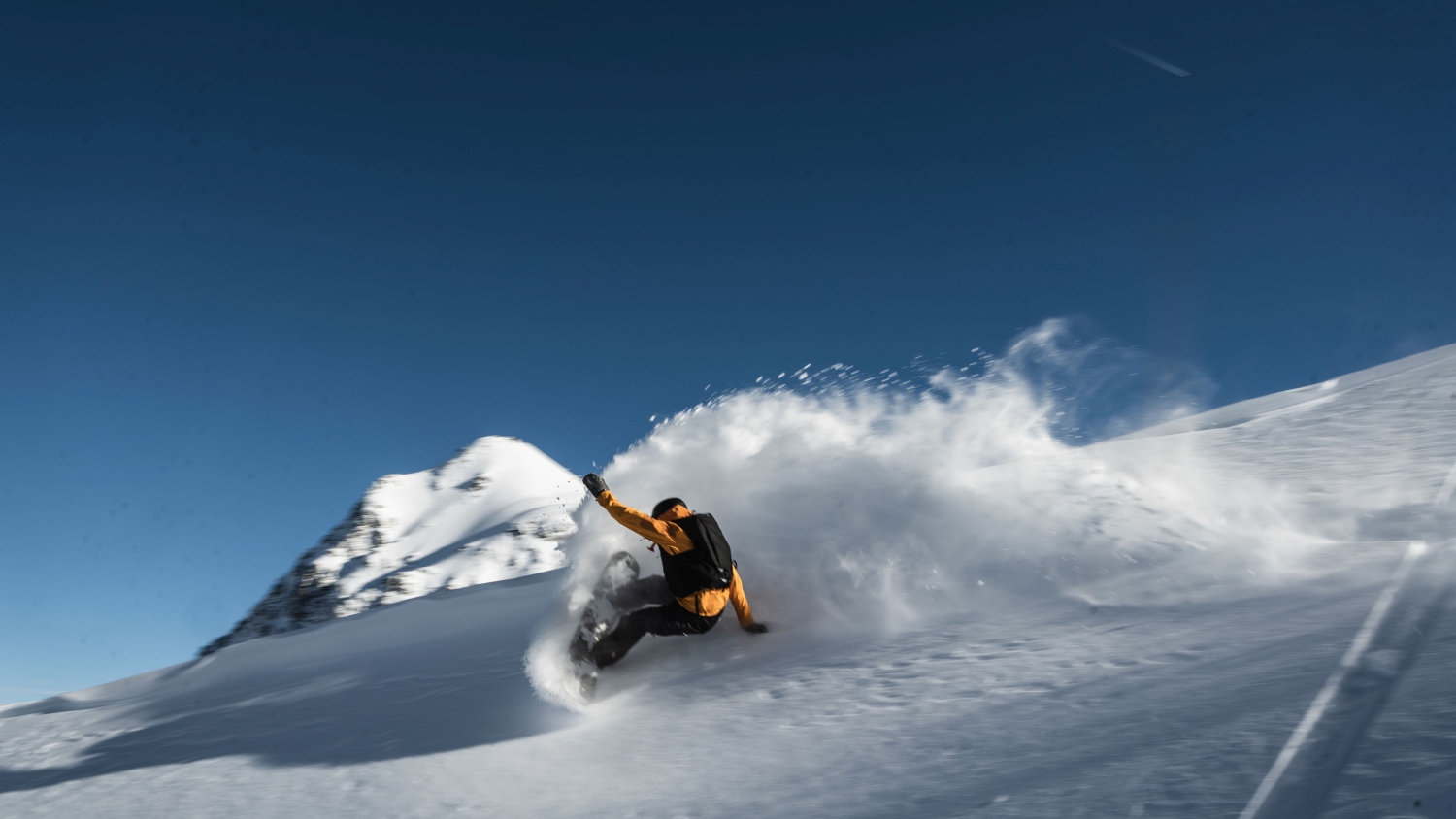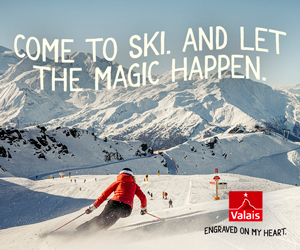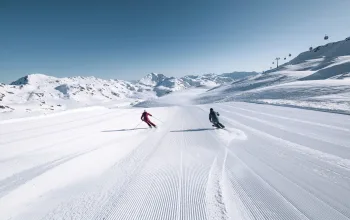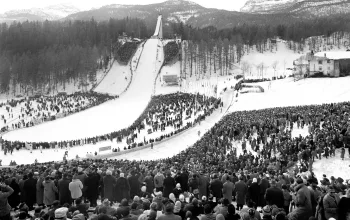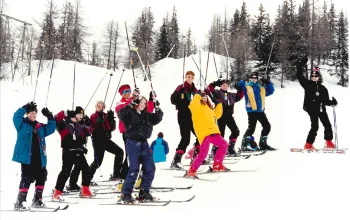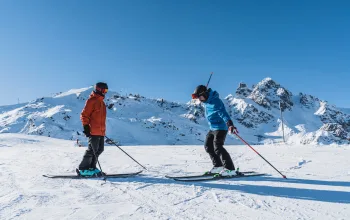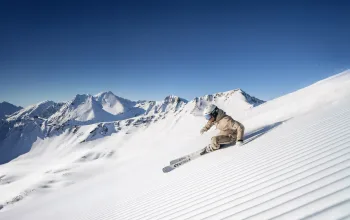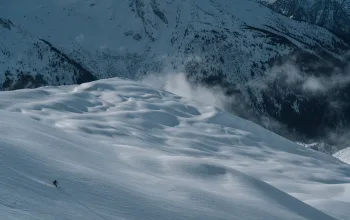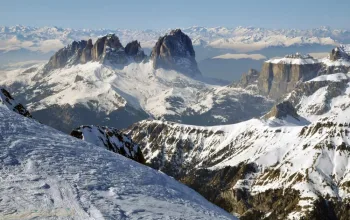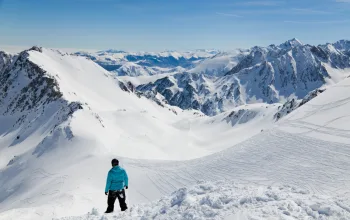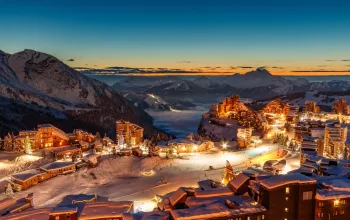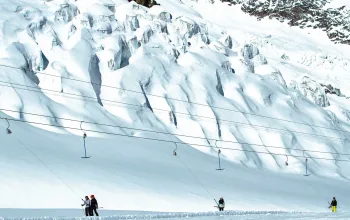I am in my happy place: sitting in a mountain restaurant in a tiny village in the Alps with a fresh pint, a group of friends, and the tiredness which comes from an epic off-piste descent spreading through my limbs. More specifically, I’m sitting in the Refuge du Bois, in the French hamlet of Champagny-le-Haut. I’ve actually never been to this particular establishment before, but it has everything you could ever want from an alpine hut: old skis and vintage climbing helmets on the walls, dog-eared mountaineering books stacked higgledy-piggledy on wooden shelves, and even a model cable car hanging from the ceiling.
The bar is empty aside from our group, and it feels like the middle of nowhere. Near the bottom of the run we’ve just completed—a 1,300-vertical-metre-long screamer down a wide open valley called La Vélière—we found ourselves skiing past a herd of wild ibex. And yet incredibly, we’re just a 10 minute shuttle bus ride away from the largest single ski resort in the world.

La Plagne consists of 11 separate villages, which can sleep over 56,000 tourists—or the entire population of a mid-sized town like Canterbury. It has 135 pistes, 74 lifts, and a ski area which covers 10,000 hectares across seven peaks—that makes it more than three times the size of Whistler-Blackcomb. Developed from a small mining community in the 60s and 70s, it has become, arguably, the archetypal French mega-resort.
The accommodation is mostly in functional tower blocks, built in the brutalist-inspired style of the era. The lift system is fast, modern and efficient—and it needs to be: La Plagne registered more than 2.6 million “skier days” last winter. To handle these numbers, the resort has invested in enormous cable cars, capable of scooping up thousands skiers an hour. The largest, which connects this already-huge ski area to the similarly large resort of Les Arcs, can transport up to 200 people at a time in each of its double-decker cabins.
The La Plagne side of this vast “Paradiski” area is very beginner-friendly. Many of the pistes are wide, high-altitude motorways—snow sure, if a bit featureless—and almost two-thirds of them are blue or green. The resort’s name, meanwhile, has helped reinforce its reputation as a solid, if slightly unexciting, option for novice skiers. “Plagne means ‘flat’ in the local, Savoyard dialect,” explains press manager Anne Tellier. In short, it’s a great place to go for a family ski holiday, but perhaps the last place you’d expect to find epic, untouched off-piste.
There is another side to this resort, however. Beneath La Plagne’s mass-market exterior lies a well-kept secret. “Don’t tell anyone,” says Charlie Bulbrook, a British snowboarder who set up Alpoholics Chalets here 14 years ago, “but La Plagne is actually amazing for freeriding. There’s so much incredible terrain, and it’s all super-accessible.” It’s these hidden depths that my friends and I have come to explore.
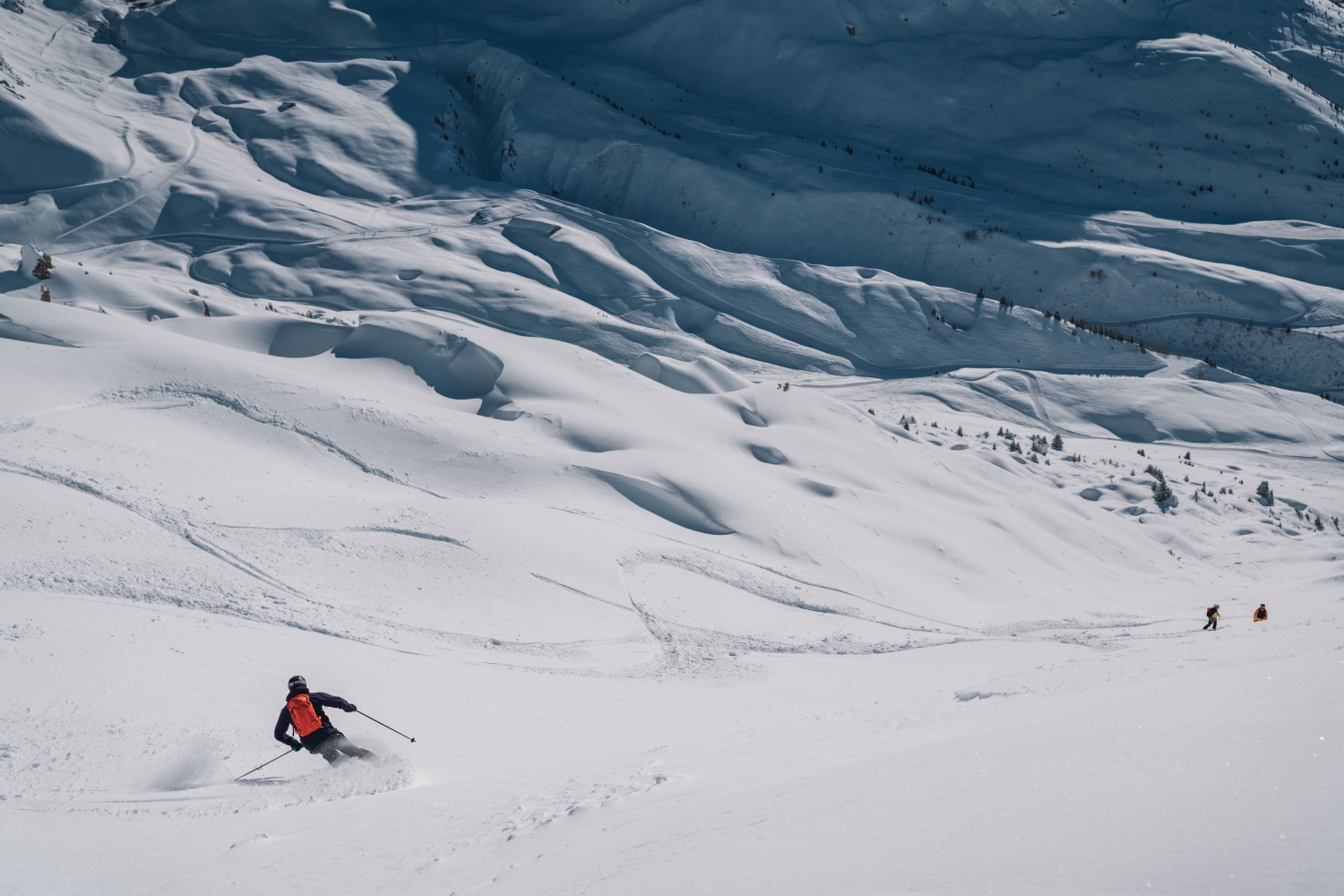
Down memory lane
Unlike the rest of my group, I’ve come on this trip with some inkling of what to expect. Back in 2003, as a fresh-faced 18-year-old straight out of school, I did my first winter season in La Plagne, working in a SkiWorld chalet. At the time, I would have told you that I spent a lot of time chasing powder. But while I was keen as mustard—and as fit as a butcher’s dog—I was basically a beginner when it came to the backcountry. I didn’t own the requisite avalanche safety kit, had little idea about route planning, and didn’t know how to read conditions. My fellow chalet hosts and I spent most of our time hiking lines that were visible from the lifts, but we still managed to make some decisions that, in hindsight, we were lucky to get away with. It’s probably just as well that there was lots that we didn’t find out about.
Returning two decades later, conditions couldn’t be more ideal—for skiing at least, if not for the journey to resort. As I drive gingerly up the switchbacks towards the main village of Plagne Centre the heavy rain spattering my windscreen turns to fat, wet snowflakes. In front of me, I watch a van make a sketchy, squirrely turn before correcting itself in the nick of time. I grip the steering wheel of the rental car a little tighter, and plough grimly on.

My mood brightens considerably when I meet my friends and our guides, Thierry Delecluse and Gilles Oliver, at breakfast. With fat skis on their feet and years of experience beneath their belts, they look like the perfect pair to show us the resort’s hidden stashes. It brightens even more the following morning, when we get a look at the weather. It’s bluebird, and set to be sunny for the next three days. Unlike the young chalet staff I used to knock around with, this group of eight mates are all experienced backcountry practitioners. We might all be a little older and a little less fit than I was at 18, but with conditions as good as this, everyone is just as keen to get after it.
“The Grande Rochette couloir is pretty gnarly, reaching 45 degrees at the steepest point”
Our first run, from the 2,500m-high Roc des Verdons back into town, is only 100m off to the side of a red piste, but the snow is deep, soft, and untracked. It’s also steep, and the run culminates in a series of rollers and gullies—apparently the result of mining activity which predated the resort. “I don’t know where they’re getting this ‘flat’ name from,” says my friend Callum Jelley, grinning.
As we pile into the massive 26-person cabins of the main gondola in Plagne Centre, the advantages of the resort’s industrial-scale cable cars become apparent. There’s no queue at the bottom, and within minutes we’ve been whisked to the top of La Grande Rochette, another of La Plagne’s seven summits.
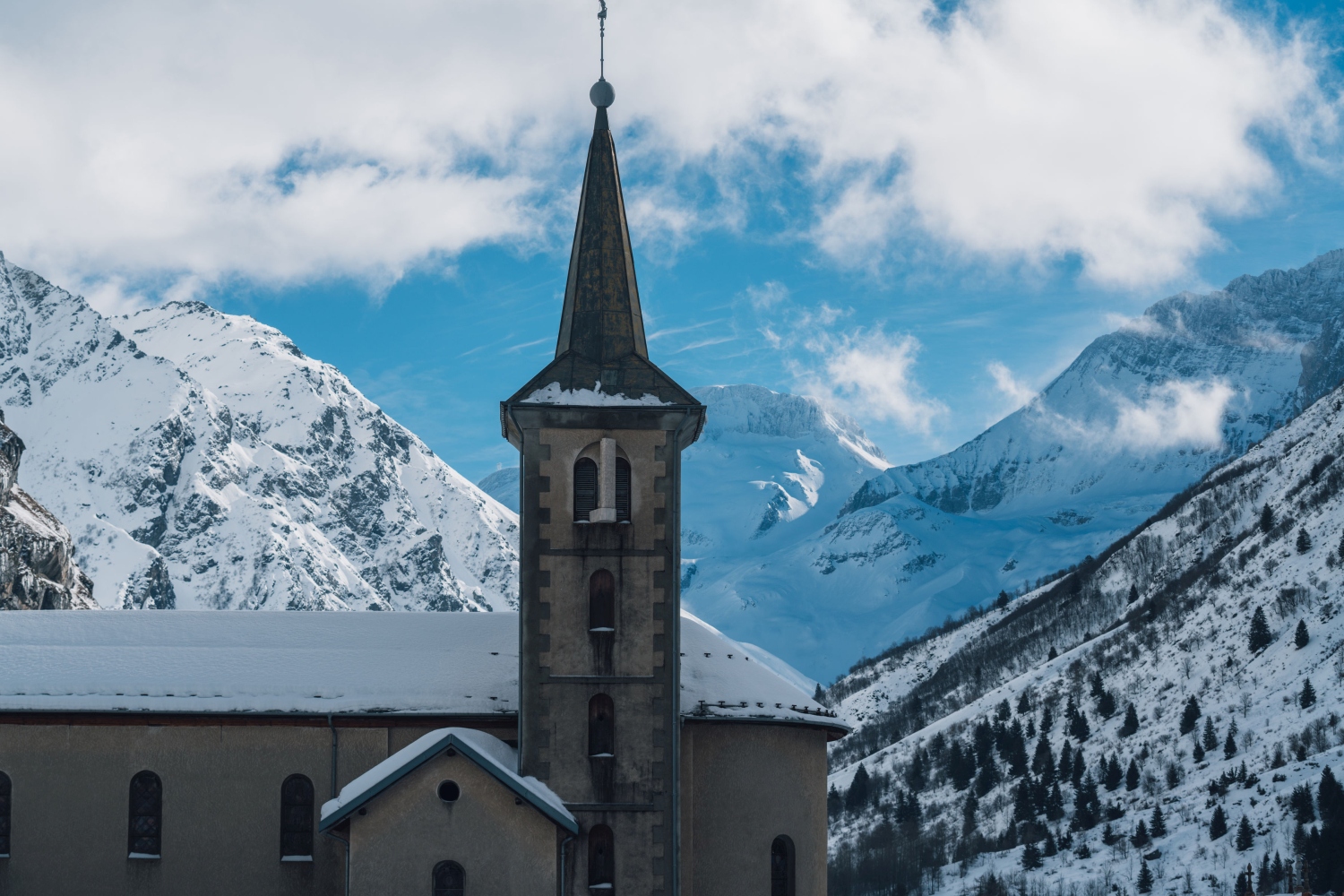
From here, we drop into a long, cruisey descent down towards Champagny-en-Vanoise, the southernmost of the resort’s villages, on the edge of the Vanoise National Park. Again I’m struck, not just by the quality of the snow, but by how empty it feels. One upside of La Plagne’s modular, multi-village layout is that there aren’t too many bottlenecks. The first lifts and home runs are different for each village, which helps keep crowds to a minimum. But the sheer size of the resort also plays its part.
We’re visiting in late January—so hardly high season—but the pistes seem wide enough to swallow up any number of skiers with ease, and as soon as we venture off piste, even if we’re in sight of the runs, we have the place to ourselves. This is one aspect that I remember from spending my first season here. We might not have been experts at route finding back then, but because La Plagne attracts a lot of beginners, we rarely had to compete with better skiers to get the goods. It’s something Charlie Bulbrook of Alpoholics Chalets, has noticed in his decade and a half here too. “With the resort being so ‘family-oriented’ there just aren’t the sheer volumes of eager powder hounds here as in somewhere like the Three Valleys,” he says.
Our first day ends on a run I’m familiar with. Beneath the Grande Rochette lift lie a series of crooked, rocky fingers separated by thin slivers of snow. I remember these couloirs as the ultimate glory run: highly visible from the lift, steep and, quite frankly, more than a little scary. I had half wondered whether returning to La Plagne might be a little like revisiting my primary school playground, where the obstacles that once seemed massive now look tiny, and unintimidating. So it’s gratifying to find out that my memory wasn’t playing tricks on me. The central Grande Rochette couloir is definitely pretty gnarly—reaching 45 degrees at the steepest point. Even with 20 years of added backcountry experience in my legs, riding it out still feels like an achievement.
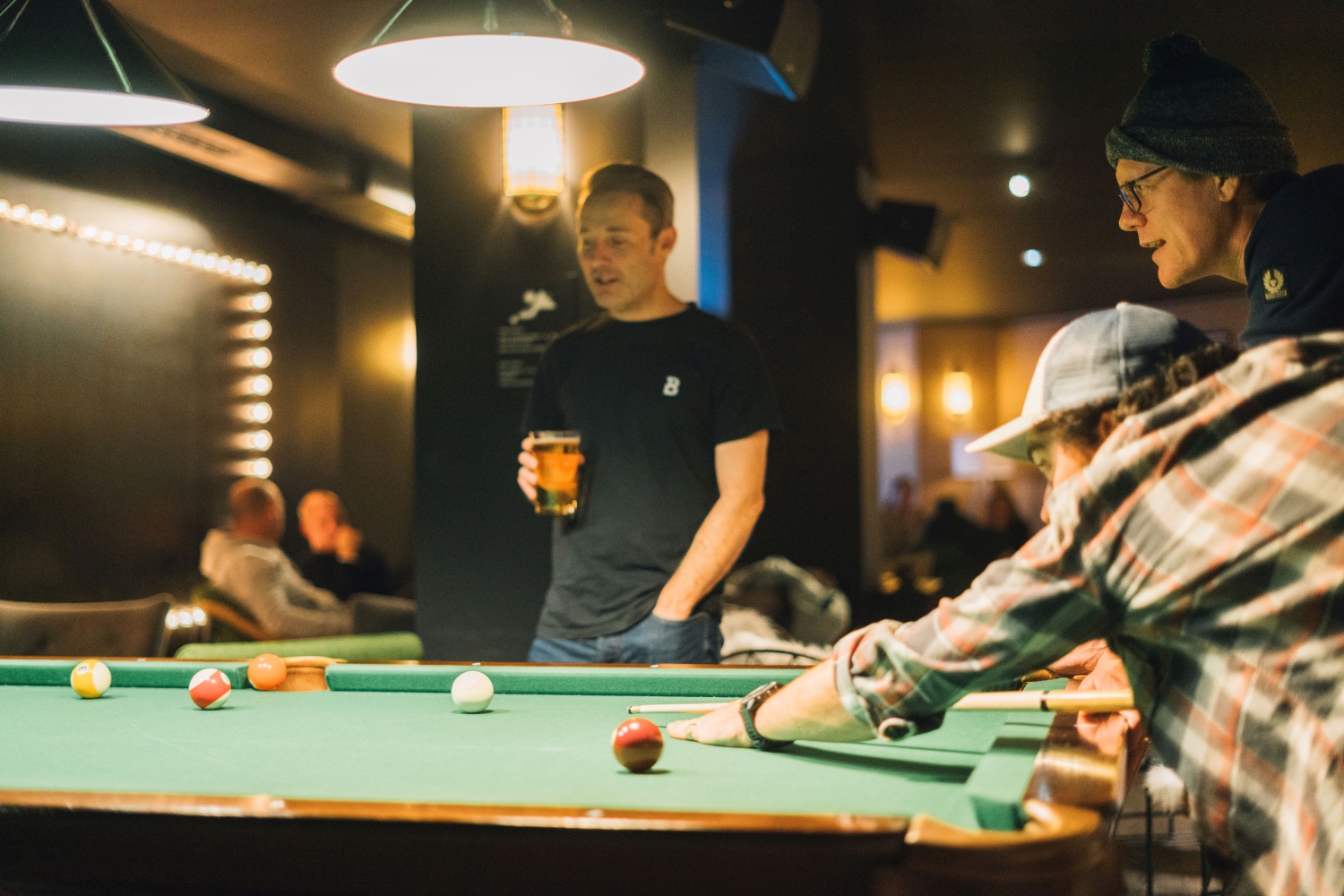
Plus ça change
Down in resort, I find there’s lots that hasn’t changed either. The shoebox apartment that I shared with my fellow chalet hosts—and all manner of unexplained smells—has been refurbished inside, but the square exterior of the skyscraper remains unchanged. Further along the snowfront, the once shabby Hotel Christina—home to the only public computer with internet access, which I used to send all-too occasional emails to my parents—is also being gutted for a refit.
The Araucaria Hotel, where we’re staying, apparently underwent a similar transformation six years previously. Inside, it’s now modern, understated, and stylish, with a brand new spa, high-end restaurant and excellent services that have earned it four stars. From the outside however, the building still looks like what it originally was—a functional, 1970s apartment block. La Plagne might be going slightly upmarket, but it’s not about to turn into Val d’Isère or Verbier. Yet this is all part of the resort’s appeal.
When I lived here as an 18-year-old, we used to lament that the multiple base station layout meant there wasn’t a central place to party. If you wanted to get stuck into après in another village, you either had to sleep with someone or sleep on a friend’s floor. These days, however, I fully appreciate how La Plagne’s plentiful supply of relatively cheap, snowside accommodation (and lack of boozy 18-year-old après ski lovers) makes this the perfect ski resort for families. Ironically, it’s these same factors that make it ideal for diehard powderhounds, like my group.
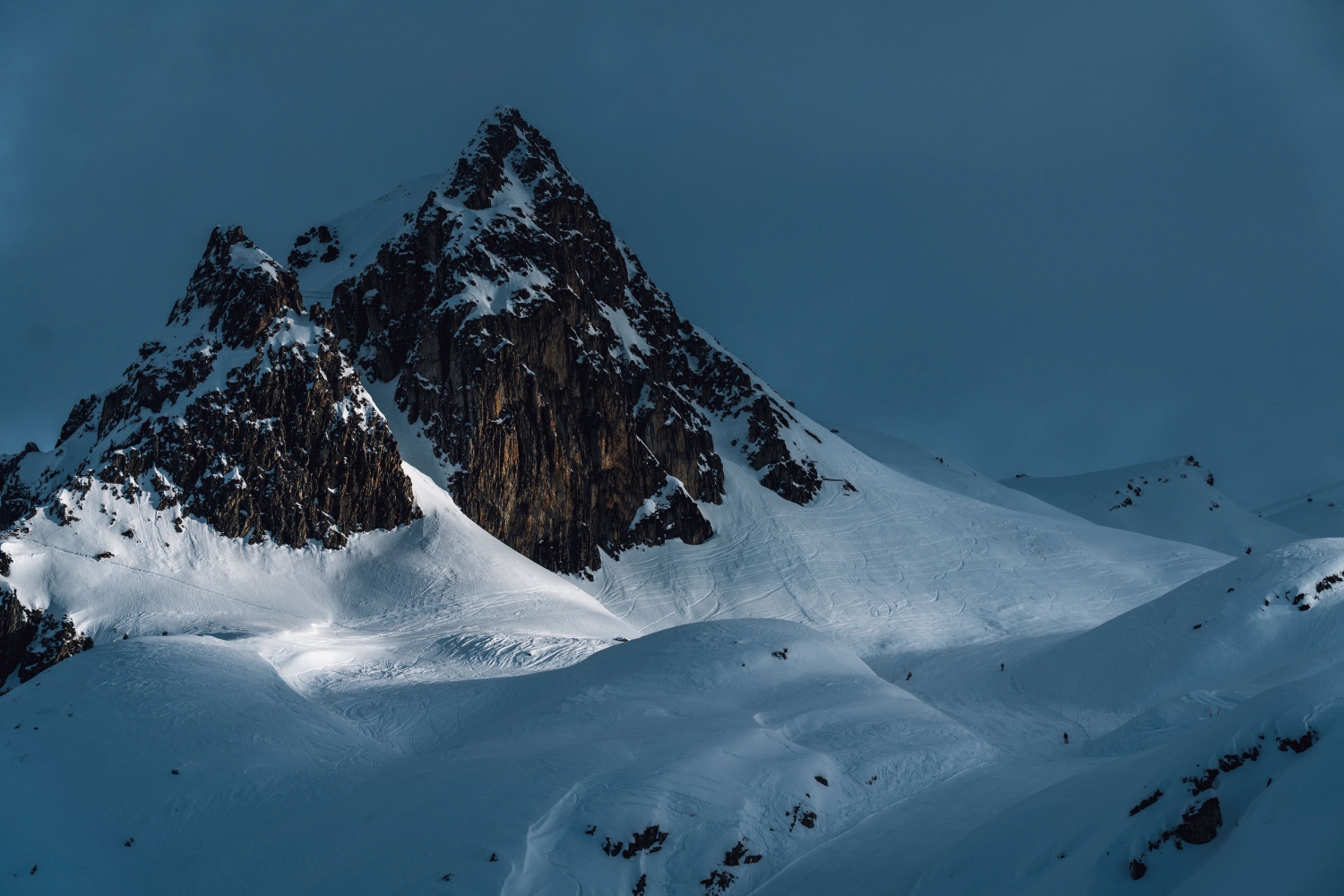
Our guides, Delecluse and Oliver have been brilliant at finding secret spots. But it’s only on our final day that they judge it safe enough to play La Plagne’s backcountry trump card. Bellecôte, the highest mountain in the ski area, has an epic north face, which plunges almost uninterrupted from the summit at 3,417m to the floor of the valley which separates La Plagne from Les Arcs, 2,000m below. Known simply as la face nord by locals, it’s enormous, with countless different couloirs and routes to choose from.
On the south side of the peak, closest to the resort, a gondola and a t-bar used to offer access to glacier skiing. But the glaciers were already disappearing when I did my season here two decades ago. In the years since, these lifts have become unusable. The 2024-25 season will see the opening of a replacement gondola, which will carry skiers up to a brand new restaurant with a panoramic viewing deck overlooking the north face. When we visit, however, the lift isn’t yet completed. So we strap on touring skis and splitboards, and tour upwards for an hour to reach the ridge.
Unfortunately, most of the fresh snow of the previous two days is gone. Unseasonably warm temperatures have also triggered avalanches, which have made the larger lines on the north face unsafe to ride. Still, we manage to find some lovely pockets of powder on the petite face nord—the smaller side of the face.
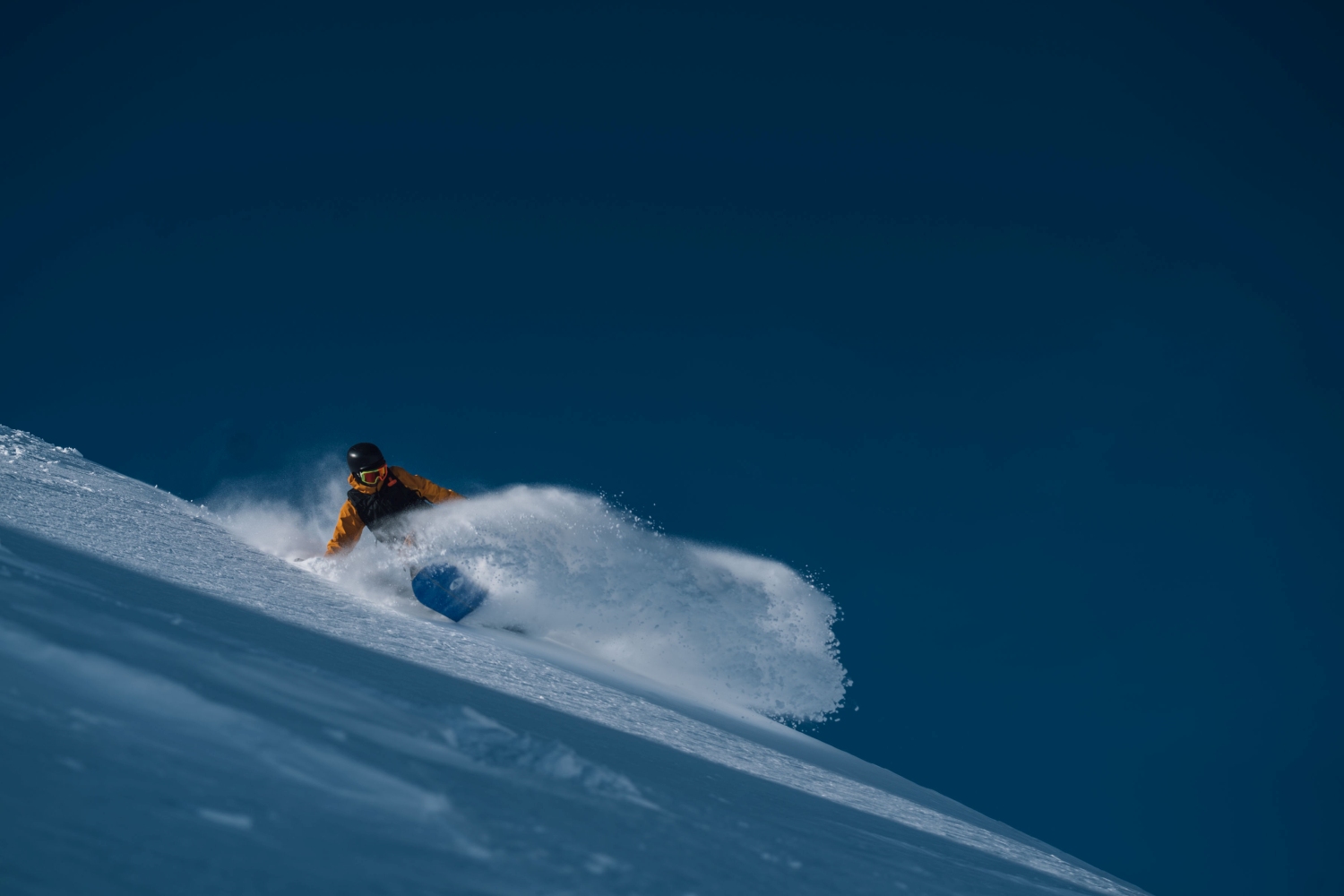
As we ride down, Oliver, our guide, tells me that some local backcountry lovers are worried that the new lift might make this face too accessible, or encourage unskilled skiers to have a crack. But looking back up at the 2km vertical descent above us, it’s so wild, and so vast, it’s impossible to imagine it ever getting crowded or tracked out.
Bouncing our way over the last bits of avalanche debris, we join a cat track and ride down to Le Fer à Cheval, a mountain restaurant in the tiny village of Les Lanches. In a few minutes a shuttle bus will arrive, bringing a handful of snowshoers up this remote valley, and carrying me back to civilization. I have to hightail it back to Plagne Centre, jump in my rental car and drive down the valley. I’ve got a train to catch. But we still have a few minutes before the bus arrives; a few minutes more of feeling like we’re in the middle of nowhere, on the edge of the world’s largest ski resort. It’s just enough time, in fact, to order a beer. And before long, I’m back in my happy place.
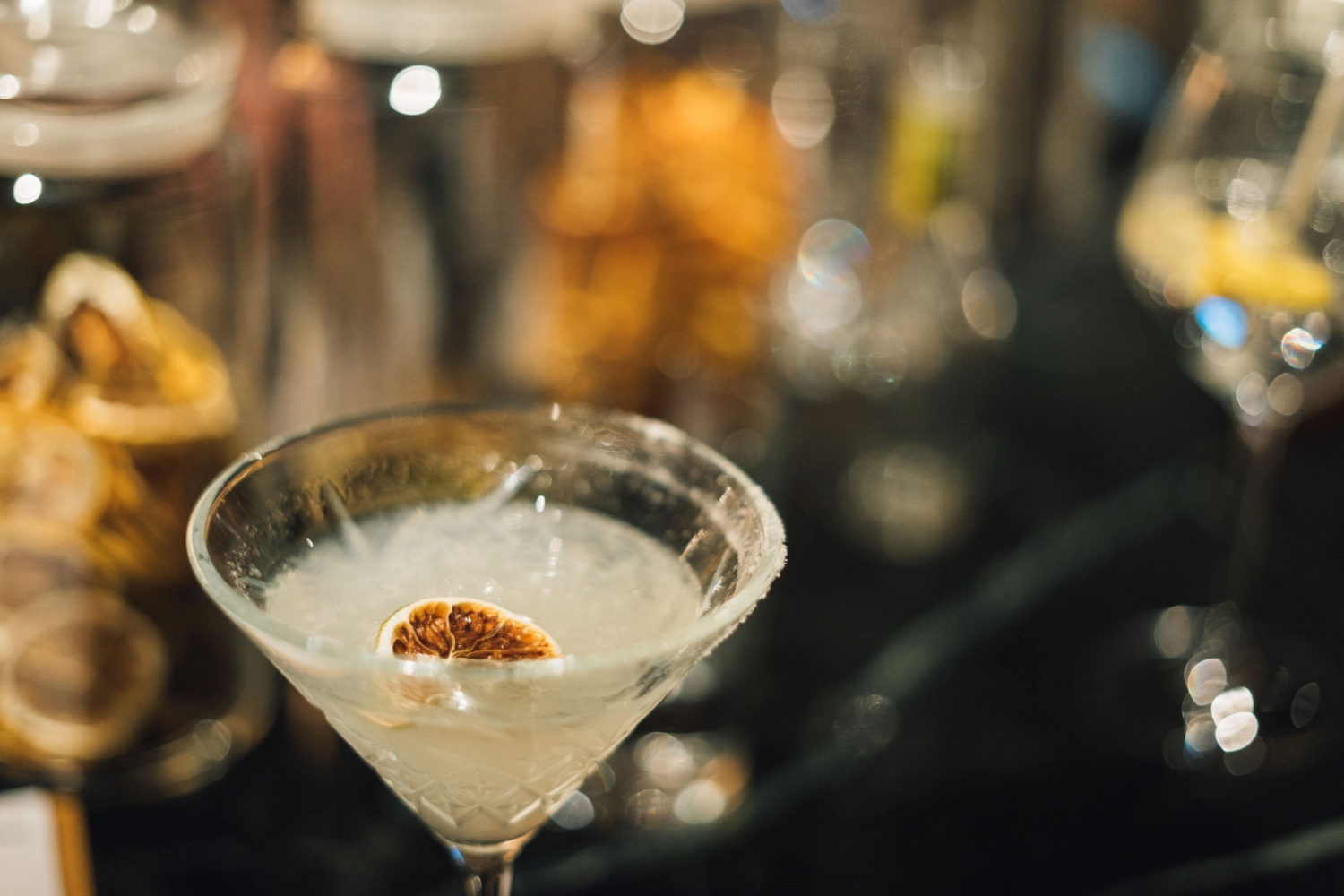
Snowhow
Our trip
Danny’s trip was supported by Intersport, the ski & snowboard rental experts, and La Plagne Tourism.
Getting there
La Plagne is easily accessible from the UK by train. The main line to Bourg St. Maurice runs through Aime, the village at the bottom of the mountain. Travel Ski offers train travel packages in partnership with Eurostar.
Ski rental & guides
Danny and friends’ equipment rental was organised through Intersport, which allows you to pick from a range of high end skis and snowboards, and swap them each day, according to conditions.



